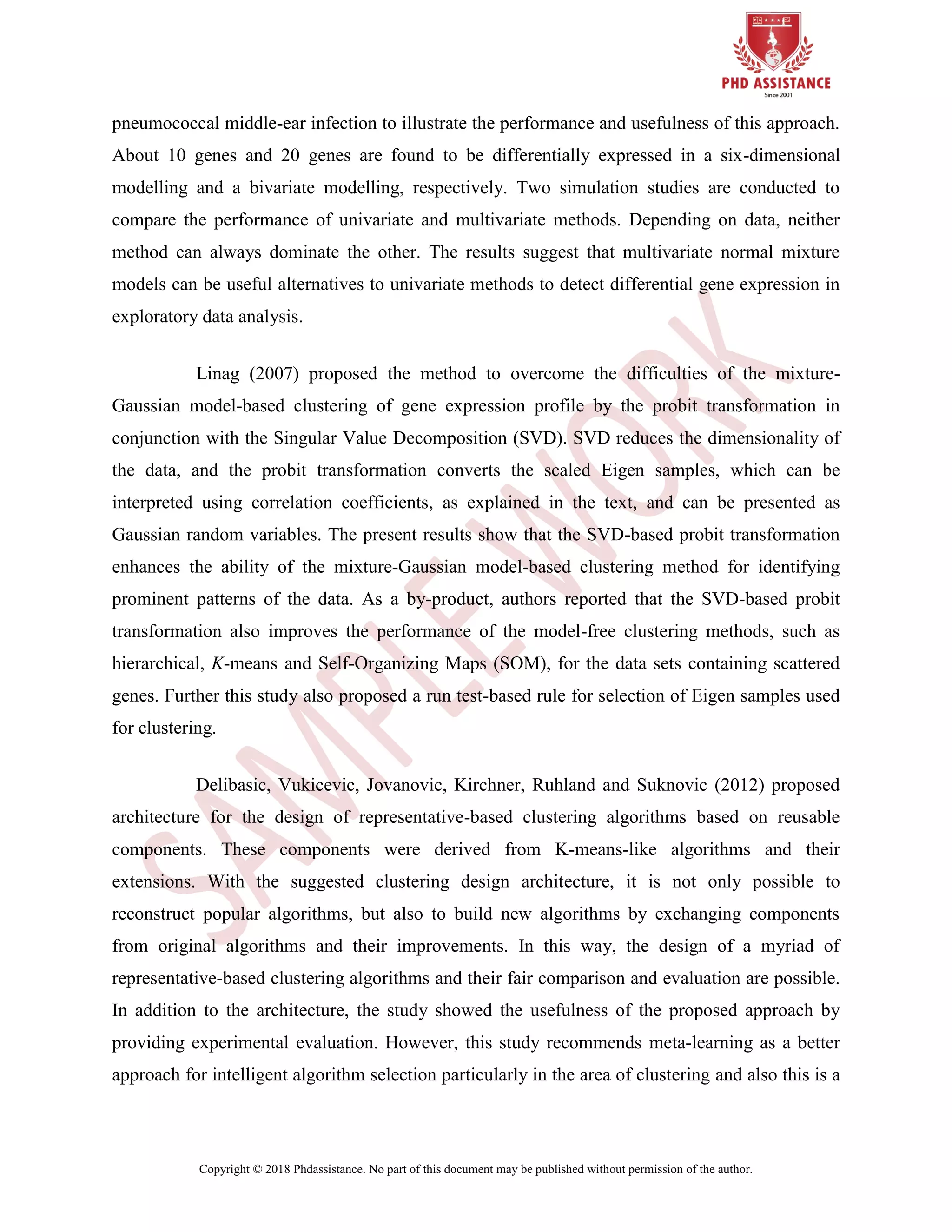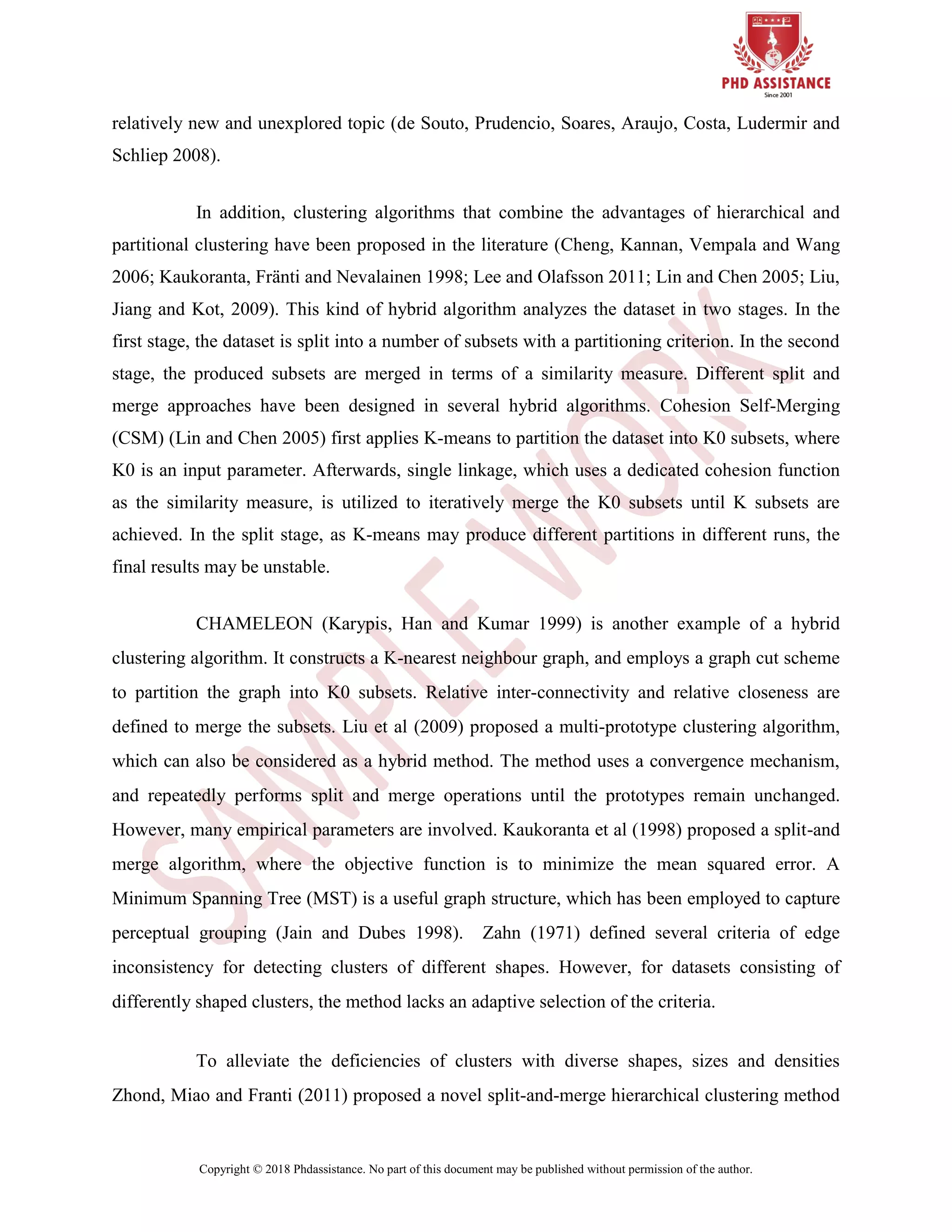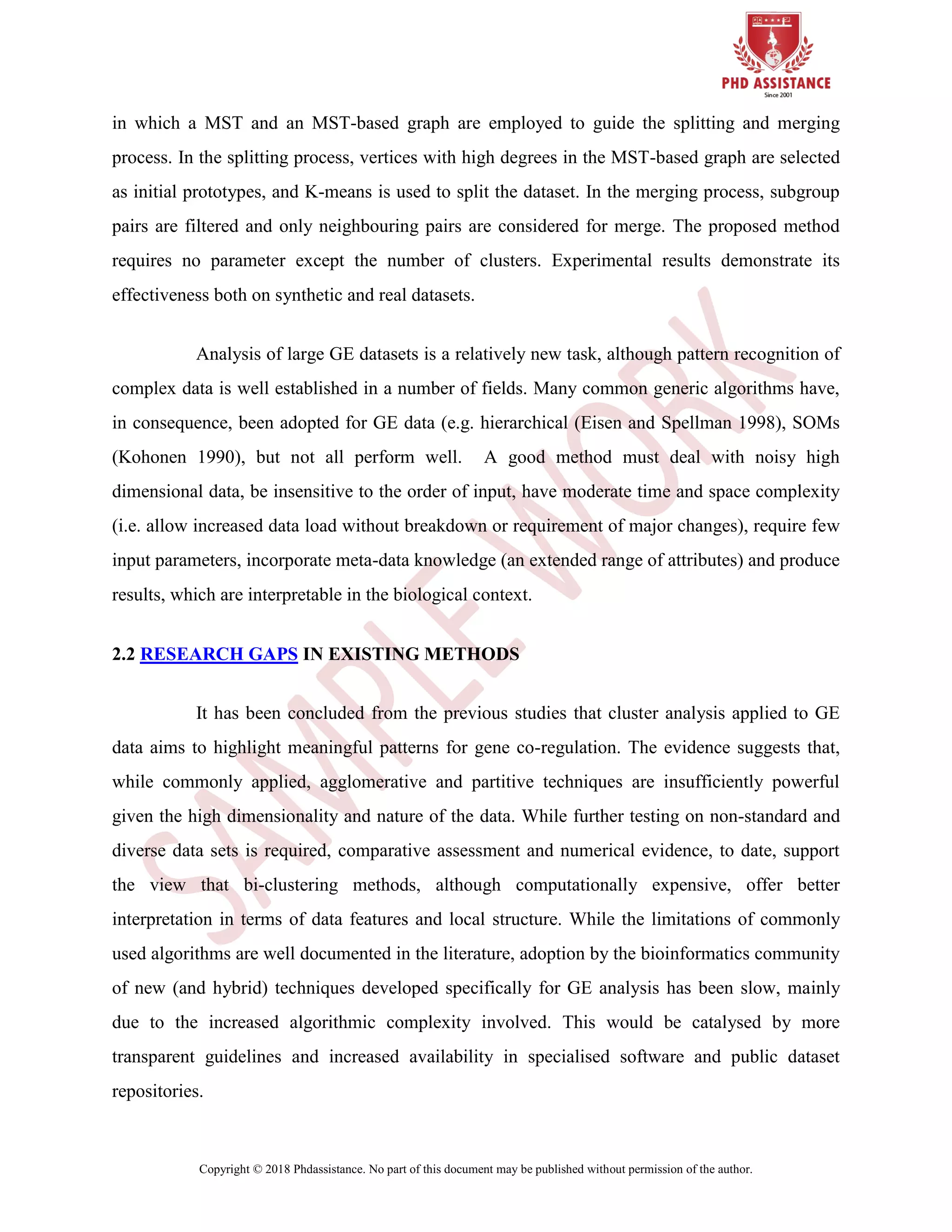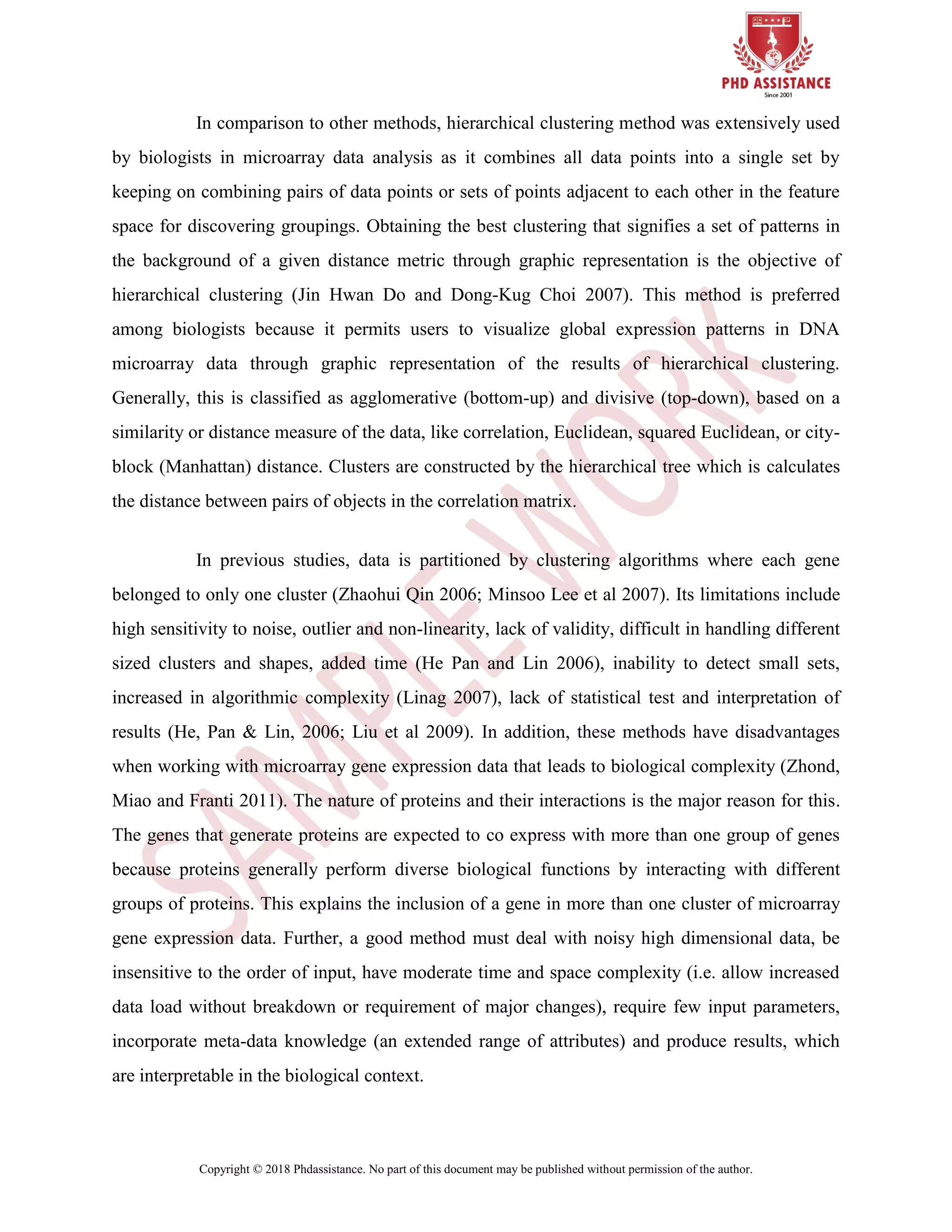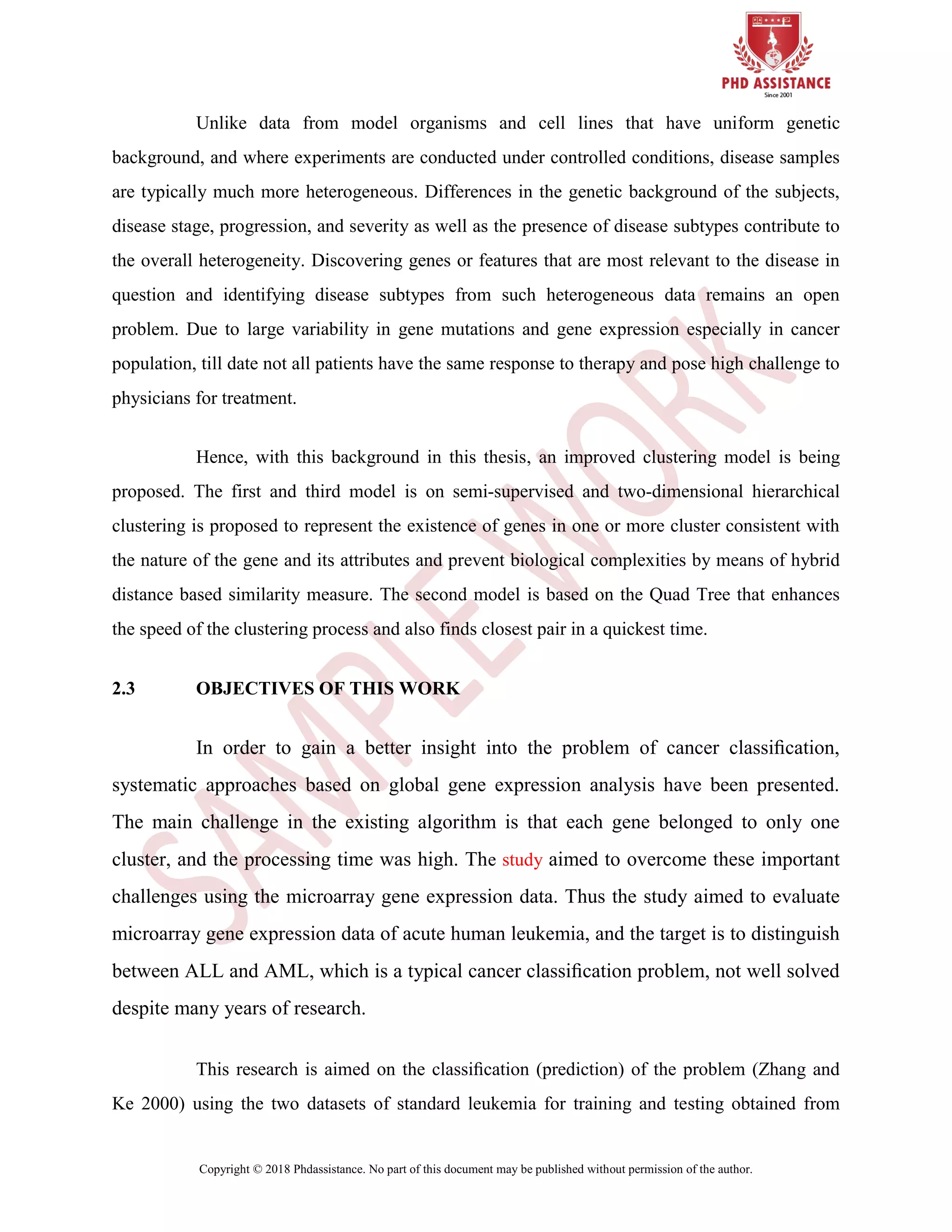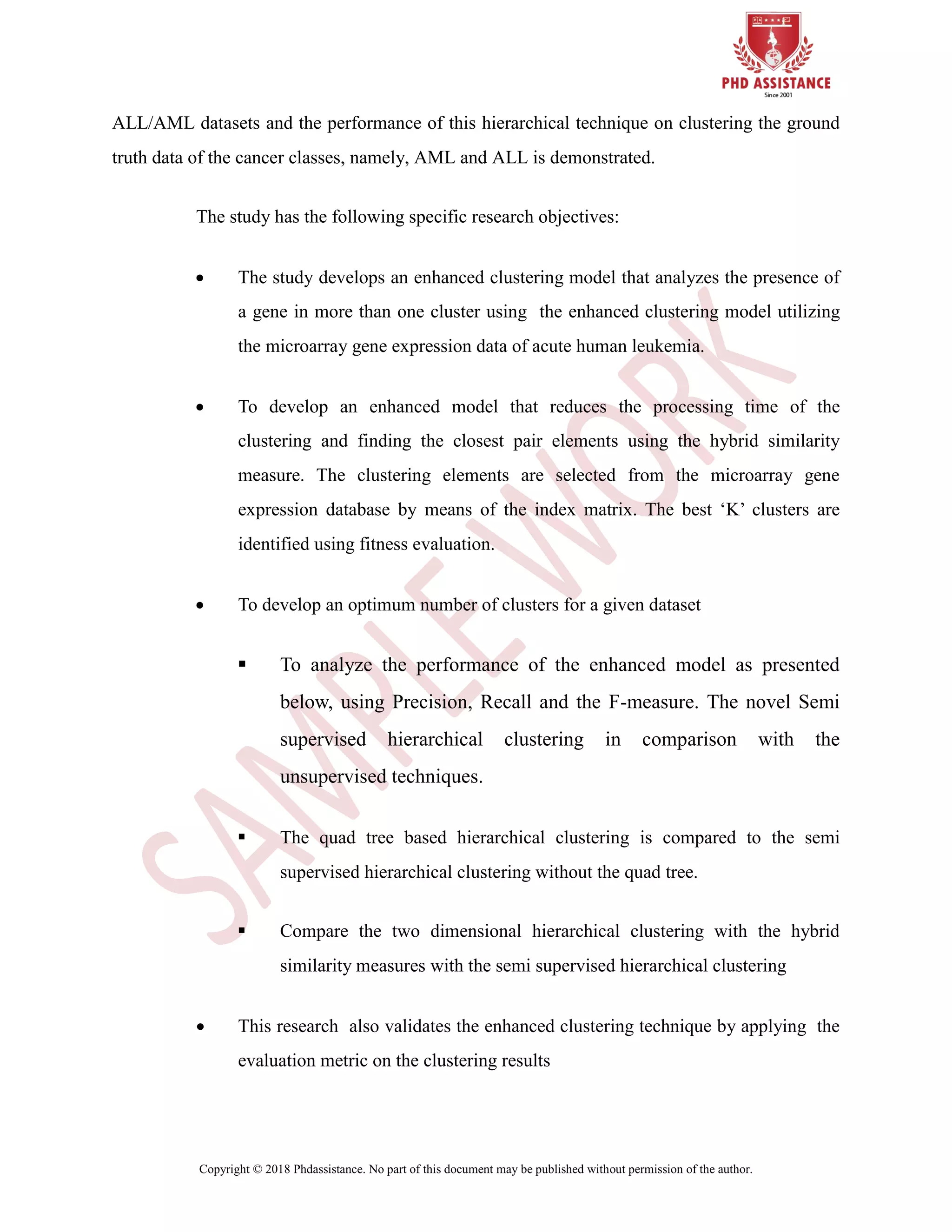This document reviews the advancements in microarray gene expression data analysis, highlighting the significance of clustering algorithms in categorizing gene expression patterns for biological research. It discusses various clustering methods, including k-means, fuzzy c-means, and hierarchical techniques, while emphasizing their application in handling complex and noisy genomic data. The review also examines recent developments, such as particle swarm optimization for improved clustering accuracy and the integration of statistical frameworks for gene cluster identification.
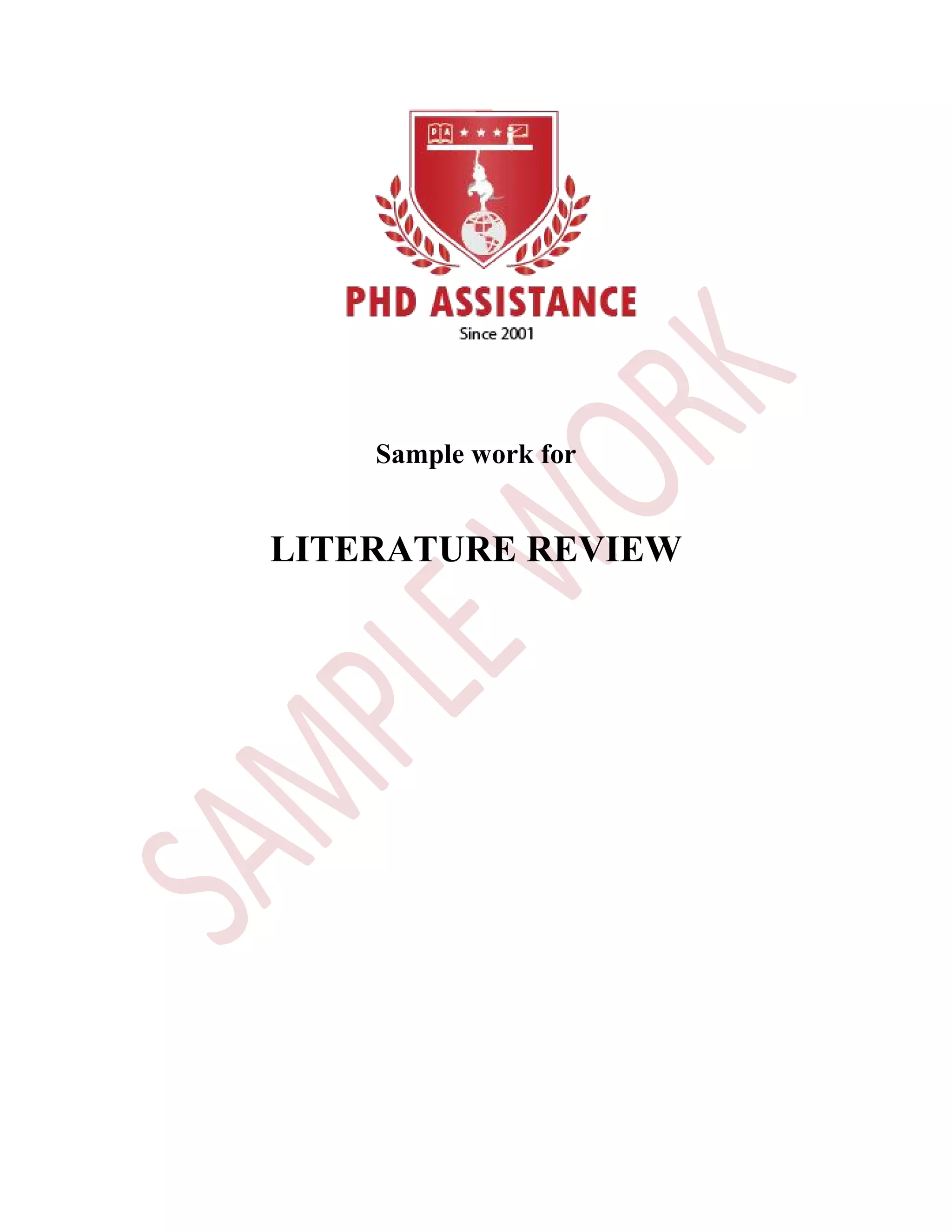
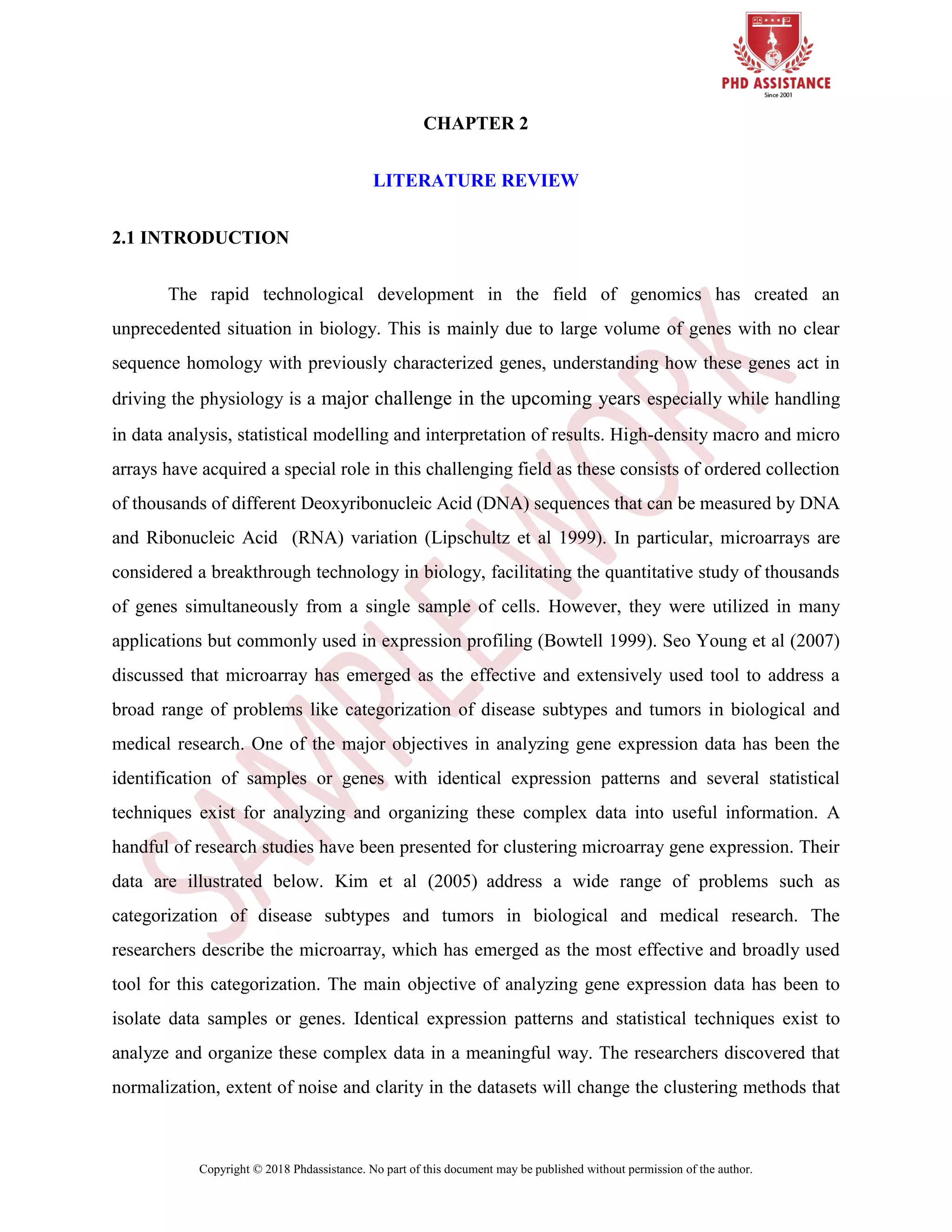
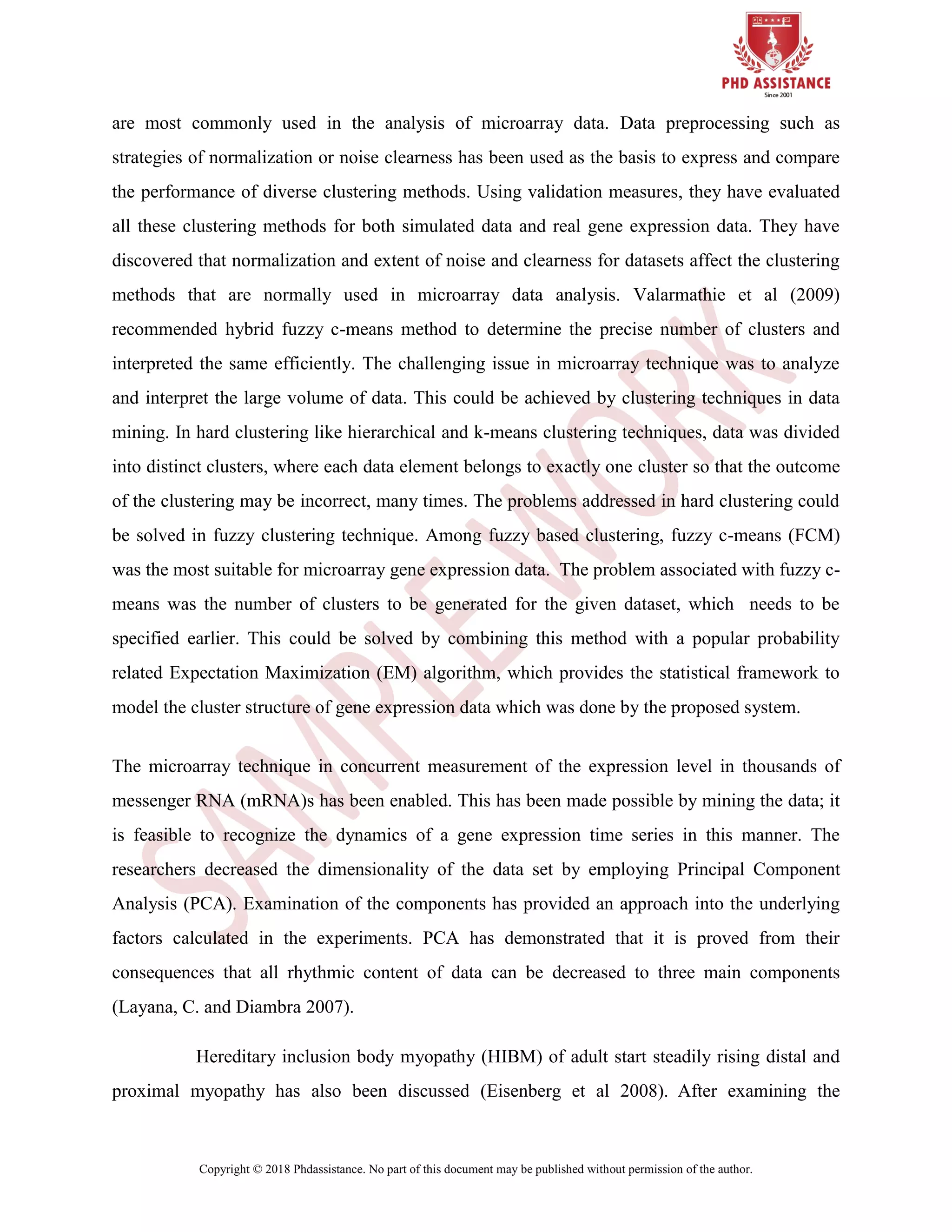
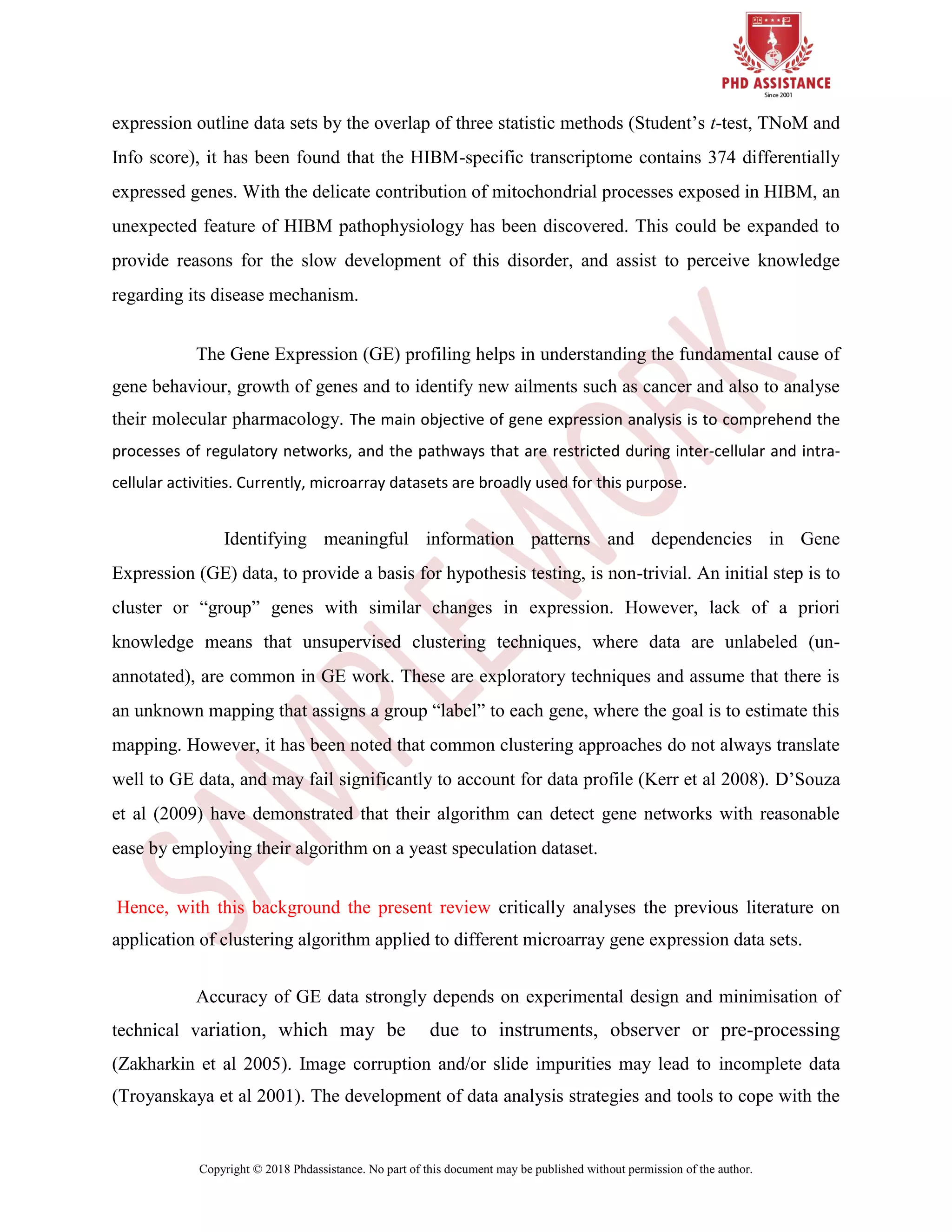
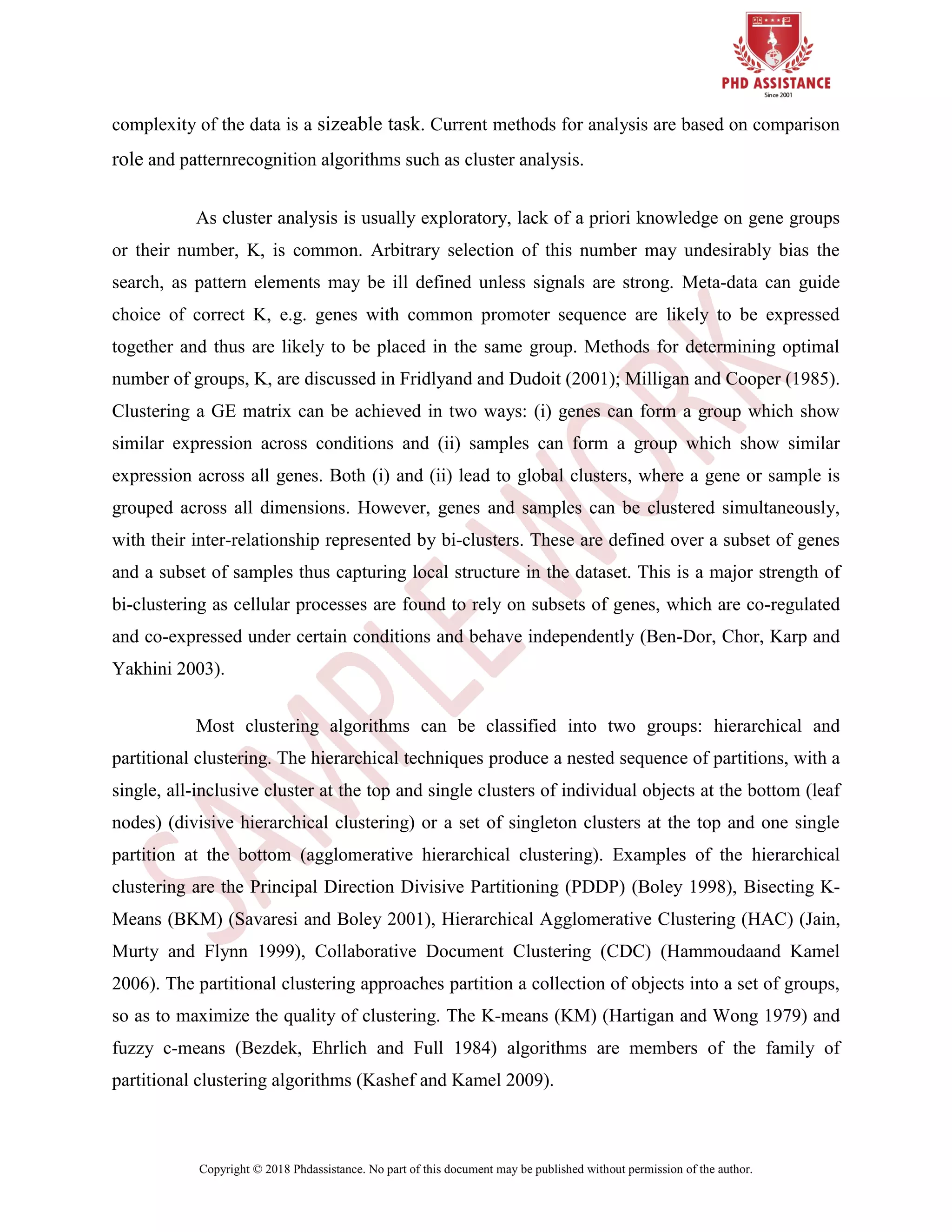
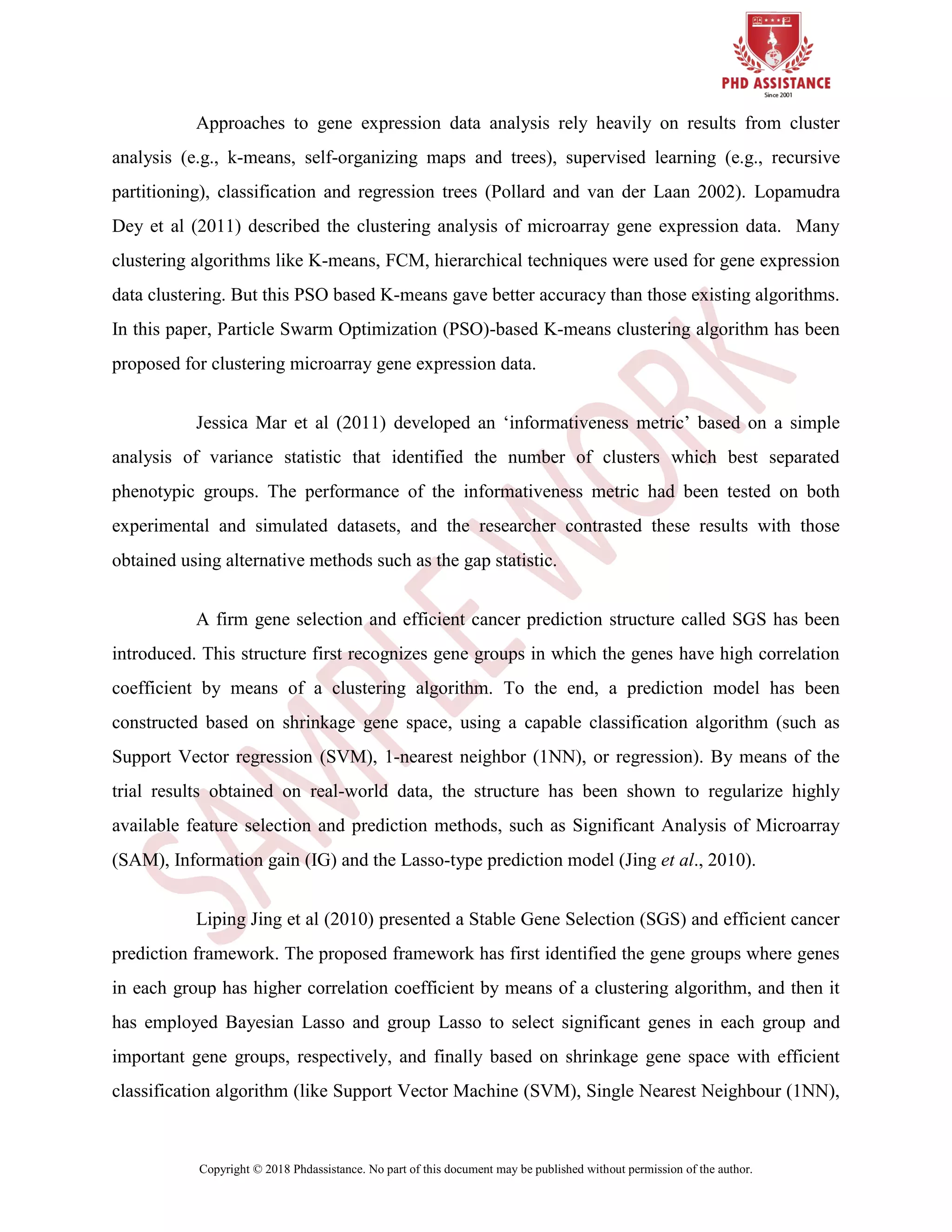
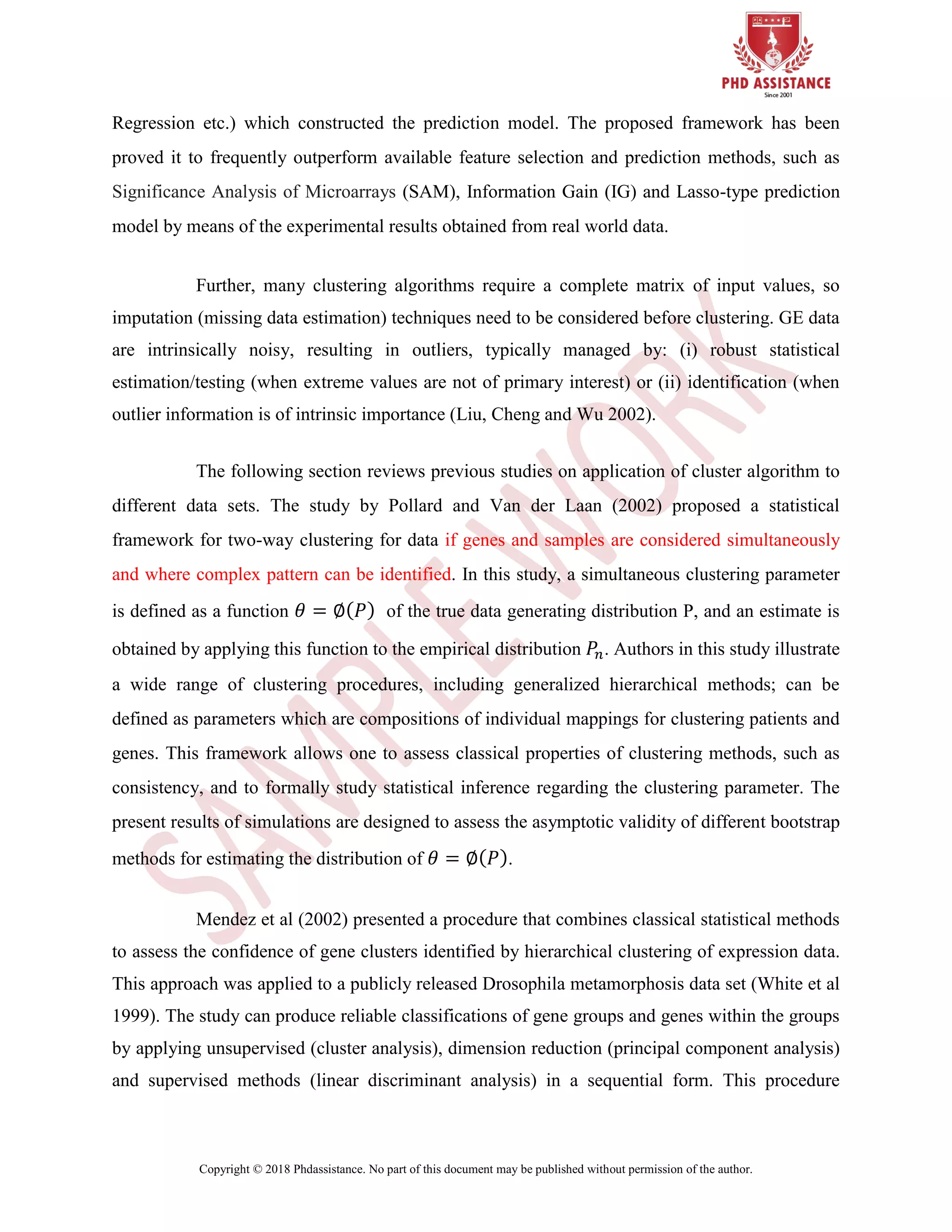
![Copyright © 2018 Phdassistance. No part of this document may be published without permission of the author.
provides a means to select relevant information from microarray data, reducing the number of
genes and clusters that require further biological analysis.
Xu et al (2002) proposed three Minimum Spanning Tree (MST)-based algorithms:
removing long MST-edges, a center-based iterative algorithm, and a representative-based global
optimal algorithm. But for a specific dataset, users do not know which algorithm is suitable.
Most clustering algorithms become ineffective when provided with unsuitable parameters or
applied to datasets which are composed of clusters with diverse shapes, sizes, and densities.
Du and Lin (2004) suggested an alternative parallelized algorithm of hierarchical
clustering to solve the problem of traditional hierarchical clustering which cannot handle large
data sets within a reasonable time and memory resources. The study was implemented on a
Multiple Instruction Multiple Data (MIMD) architecture, which shows considerable reduction in
computational time and inter-node communication overhead, especially for large data sets. The
authors used the standard message passing library, Message Passing Interface (MPI) for any
MIMD systems.
The study by Seal, Komarina and Aluru (2005) developed Clustering algorithms on
gene expression data to find co-regulated genes. The study reduced the run time to O(N2) by
applying known hierarchical clustering algorithms [Proc. 9th Annual ACM-SIAM Symposium
on Discrete Algorithms, 1998, pp. 619–628].The problem of high run time was addressed by
Pearson correlation coefficient based hierarchical clustering. The study presents an algorithm
which runs in O(NlogN) time using a geometrical reduction and shows that it is optimal.
The study by He, Pan and Lin (2006) presented multivariate normal mixture model
based clustering analyses to detect differential gene expression between two conditions.
Deviating from the general mixture model and model-based clustering, the mixture
models with specific mean and covariance structures that account for special features of two-
condition microarray experiments were proposed. Explicit updated formulas in the Expectation-
Maximization (EM) algorithm for three such models are derived. The methods are applied to a
real dataset to compare the expression levels of 1176 genes of rats with and without](https://image.slidesharecdn.com/literaturereview1-min-190214085422/75/Sample-Work-For-Engineering-Literature-Review-and-Gap-Identification-8-2048.jpg)
